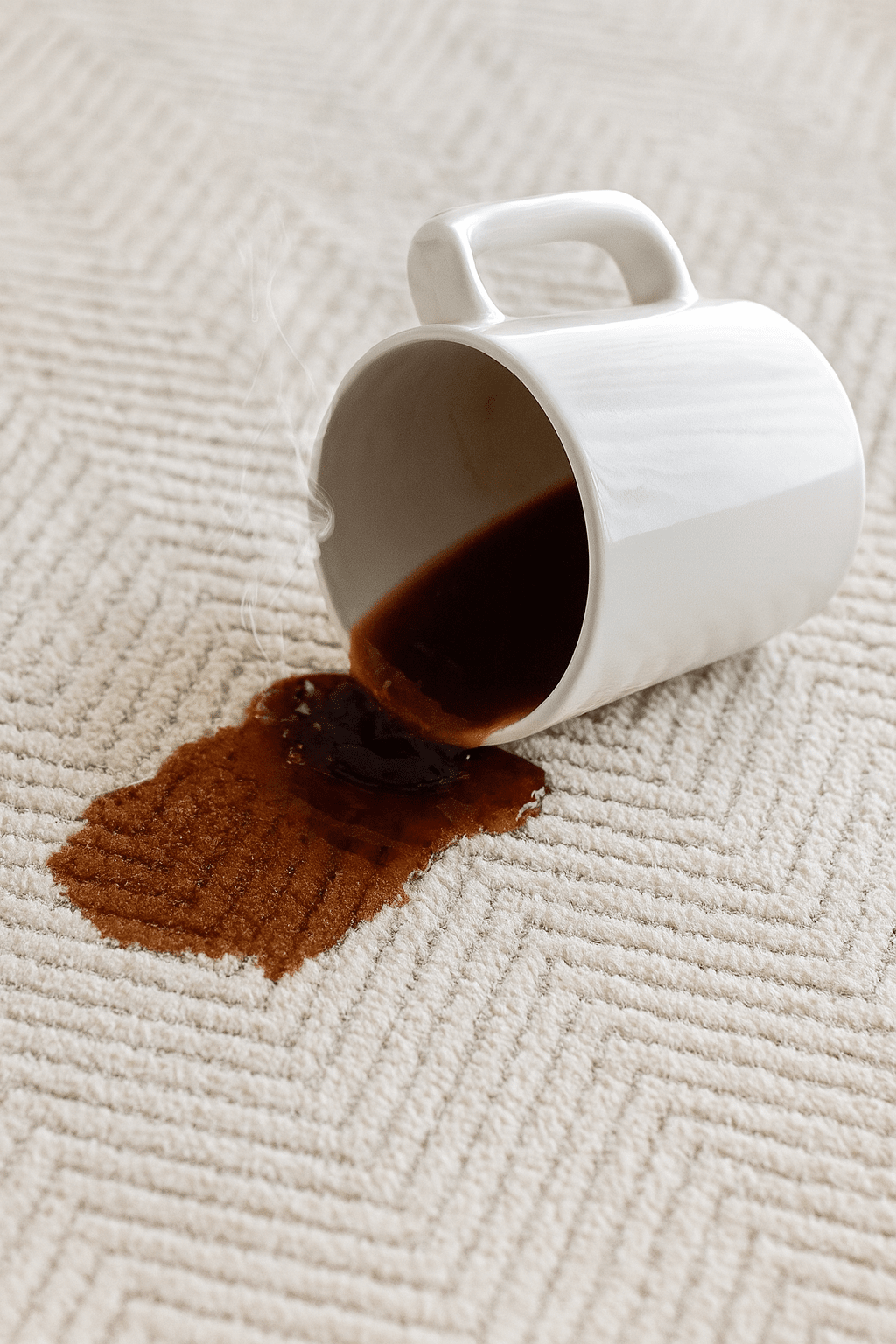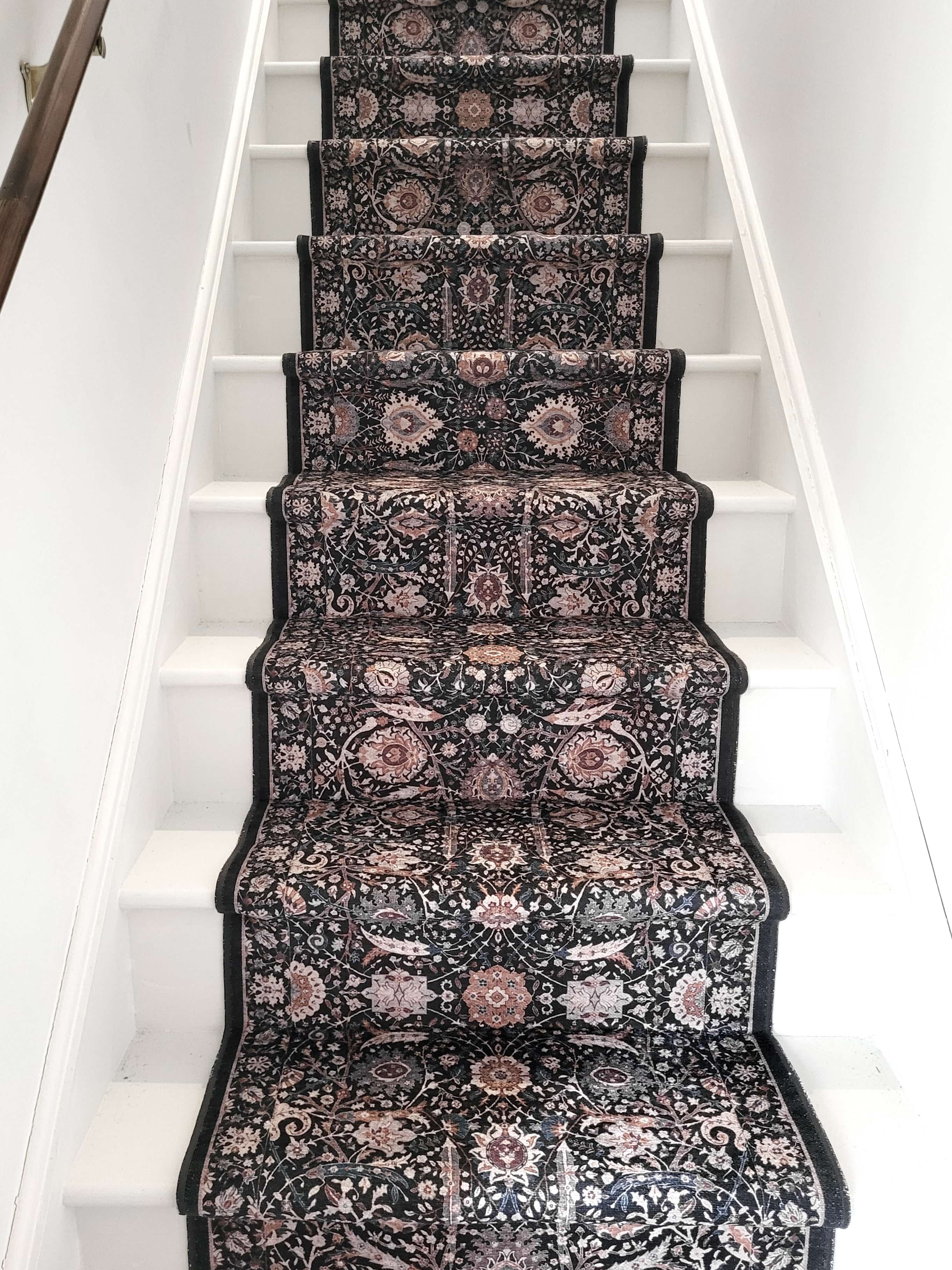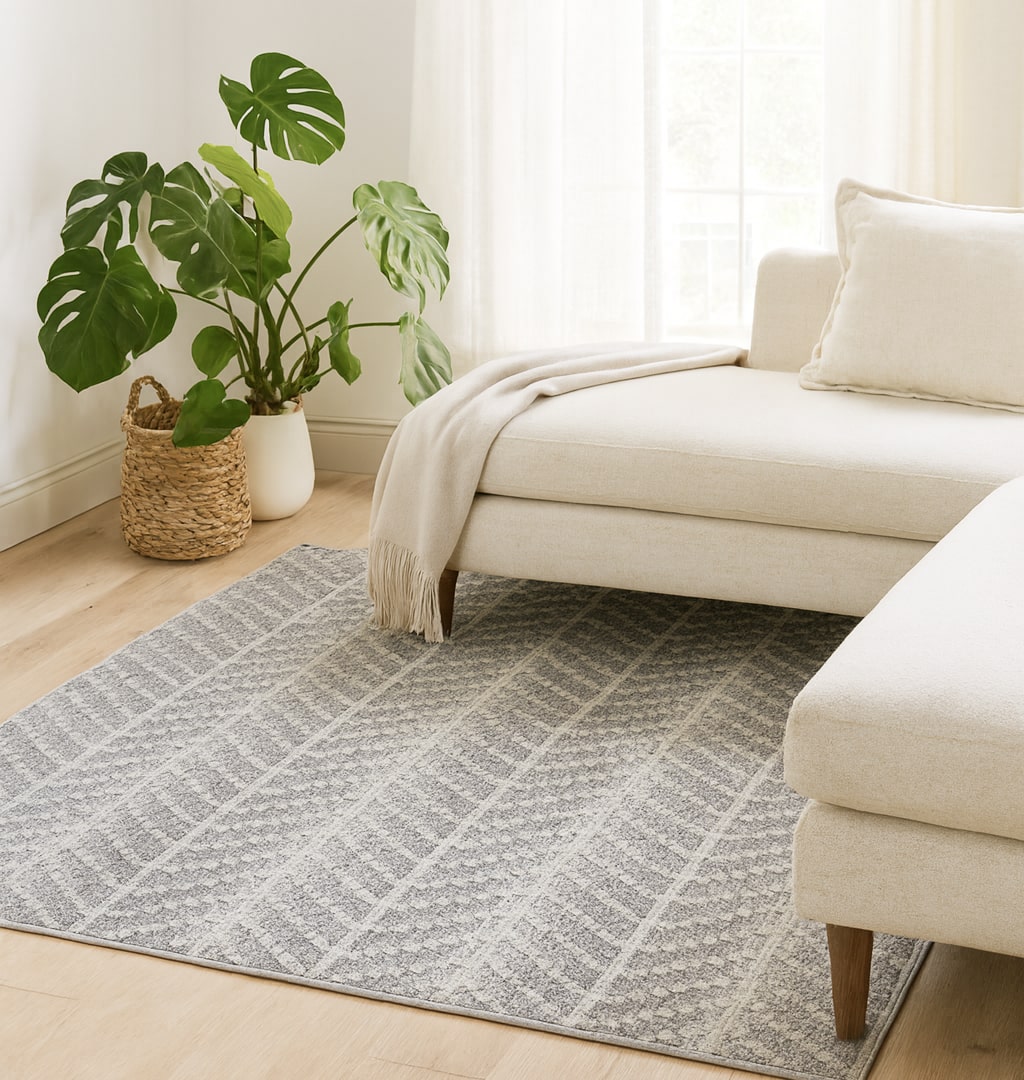Remove Coffee From Carpets: Introduction
Few things feel worse than spilling your morning coffee all over your rug or carpet. Whether it’s a small drip on the living room rug or a full cup tipping over onto the dining room carpet, coffee stains can leave behind dark, stubborn marks that seem impossible to get out.
The truth is, coffee stains are manageable if you know the right methods. In this guide, we’ll cover why coffee stains rugs so easily, step-by-step cleaning techniques, what not to do, and when to call a professional. By the end, you’ll know exactly how to remove coffee from carpets and rugs that show every drop.

Why Coffee Stains Rugs So Easily
Coffee is loaded with tannins, the same natural compounds that give tea, wine, and chocolate their strong color. These tannins love to bond with fibers, which is why a splash of black coffee can leave a lasting mark.
If you add milk, cream, or flavored syrups, the problem compounds. Now, you’re not only fighting tannins, but also proteins, fats, and sugars that can sour over time or attract dirt if they aren’t fully removed. That’s why you’ll sometimes notice old coffee stains that don’t just look bad. They smell off, too.
Different rugs also react differently. A synthetic area rug may resist stains better and respond quickly to cleaning, while a natural fiber rug like wool will absorb liquid faster and needs gentler handling.
First Response: Don’t Panic, Just Blot
As with most spills, the first moments matter most. The instinct to scrub is strong, but it’s the worst thing you can do. Scrubbing pushes the liquid deeper into the rug pile, spreading the stain. Instead, grab a clean white cloth or paper towel and blot—firm, steady pressure, lifting as much liquid as possible.
If the coffee stain has already begun to set, splash a little cold water onto the area to rehydrate it. This dilutes the coffee and prevents the tannins from locking in, giving you a second chance at lifting them out.

The Best Methods for Cleaning Coffee Stains
Once you’ve contained the spill, it’s time to clean. There isn’t one “perfect” method, but a few tried-and-true approaches work in most homes.
Method 1: Vinegar + Dish Soap
The most reliable is a simple vinegar and dish soap solution. Mix a tablespoon of white vinegar with a tablespoon of dish soap in two cups of warm water. Dip a clean cloth in the mixture and dab gently at the stain. You’ll usually see coffee transferring onto the cloth after a few passes. Once the spot looks lighter, rinse with cold water and blot dry. This is one of the most effective DIY methods for how to get coffee out of a rug without leaving a residue.

Method 2: Club Soda
Another quick fix, especially for fresh coffee stains, is club soda. Pour just a little directly onto the coffee spill and blot. The carbonation helps lift tannins out of fibers, and it’s often enough for smaller accidents on synthetic rugs in high-traffic areas like living rooms.
Method 3: Baking Soda + Water
If you’d prefer something dry and low-mess, baking soda is a great ally. Create a paste with baking soda and water, spread it over the stained area, and let it dry completely. As the paste hardens, it absorbs both moisture and pigment. A quick vacuum afterward often leaves the fibers looking refreshed and odor-free.

Method 4: Professional Rug Cleaner
For particularly stubborn stains, a commercial carpet or rug cleaner may be worth keeping on hand. Just make sure you choose one that’s safe for your rug type, especially if it’s wool. Always test in a hidden corner first to be sure the cleaner doesn’t affect the color.
When Milk and Sugar Complicate Things
Black coffee is one thing, but if you drink your coffee with milk, cream or syrups, the cleanup gets trickier. Dairy proteins cling differently than tannins and can leave behind sour odors if not thoroughly cleaned. In these cases, the vinegar and dish soap solution is especially effective because it breaks down both the coffee pigments and the proteins.
If an odor lingers after cleaning, sprinkle dry baking soda over the area once it’s mostly dry. Leave it overnight and vacuum it up in the morning. This helps neutralize any sourness and freshens the rug.

What Not to Do
In the rush to save a rug, people often make mistakes that actually lock the stain in. The biggest mistake is using hot water. Heat accelerates the bond between tannins and fibers, setting the stain permanently. Stick with cold or lukewarm water instead.
Bleach is another common misstep. While it may seem like the fastest way to brighten a white or light-colored rug, bleach can weaken fibers and leave yellow patches behind. Harsh scrubbing is equally damaging as it frays fibers and pushes the stain deeper.
When to Call in the Professionals
Most coffee spills can be handled at home, but sometimes a stain proves stubborn. If the rug is valuable, made of delicate fibers, or the spill has seeped deep into the backing, professional cleaning is the safer choice. Rug cleaners have equipment that can extract pigment and residue from deep in the pile, something a DIY approach simply can’t achieve.
Professional cleaning also helps with older coffee stains that never got treated right away. These often darken and stiffen over time, and only a thorough extraction can bring the rug back.

How to Avoid the Stress Next Time
Of course, the best rug stain is the one that never happens. We’re not going to tell you to give up coffee. That would be cruel. But, we’ll help make sure the next unexpected accident doesn’t ruin your rug (or your morning).
Applying a stain-resistant coating after professional cleaning buys you more time when spills happen. Choosing darker or patterned rugs in high-traffic areas like the dining room can also help disguise the occasional splash.
For everyday peace of mind, Well Woven’s custom stain-resistant rugs are built for real life—the kind with kids, pets, and plenty of caffeine. Whether it’s coffee, wine, or muddy shoes, these rugs handle the mess so you can sip your latte in peace.

FAQs About Coffee Stains on Rugs
How long do I have before a coffee stain becomes permanent?
Minutes matter. Blotting immediately can prevent most stains from setting. After a few hours, tannins begin to bond with fibers, making removal more difficult.
Can I use hydrogen peroxide on coffee stains?
Yes, but with caution. Use only on light-colored synthetic rugs and be sure to test a hidden area for colorfastness first. Avoid using on wool or dark rugs, as it may bleach fibers.
How do I get old coffee stains out of rugs?
Start with vinegar + dish soap, then follow with a baking soda paste. Professional cleaning may be needed for deep-set stains.
Will coffee stains come out of a wool rug?
Yes, but wool requires gentle care. Stick to mild cleaners and blotting. Avoid scrubbing or harsh chemicals.
Is coffee worse on white rugs?
Visually, yes; it shows immediately. The good news is that light rugs respond well to vinegar and baking soda solutions if treated quickly.
How do you get old, dried coffee stains out of a carpet?
Rehydrate the stain with cold water, then use a vinegar + dish soap solution. For stubborn set-in stains, alternate between blotting with the solution and applying a baking soda paste.
Will steam cleaning remove coffee stains?
Steam cleaning can help, but only once you’ve blotted and pre-treated the stain. Using steam too early in the rug cleaning process may set the stain permanently.

Conclusion: Keep the Coffee, Save the Rug
Coffee spills on your rug are inevitable, but they don’t have to leave lasting damage. By blotting immediately, using gentle but effective solutions like vinegar, baking soda, or club soda, and knowing what to avoid, you can tackle stains before they become permanent.
And if you’re tired of worrying every time you pour a cup, investing in a rug designed for life’s spills can make all the difference. Explore durable, custom-sized, stain-resistant rugs from Well Woven and enjoy your morning coffee without the stress.





Share:
Rug Stains 101: Cleaning Red Wine from Rugs
Top 10 Custom Rugs to Personalize Your Home This Summer